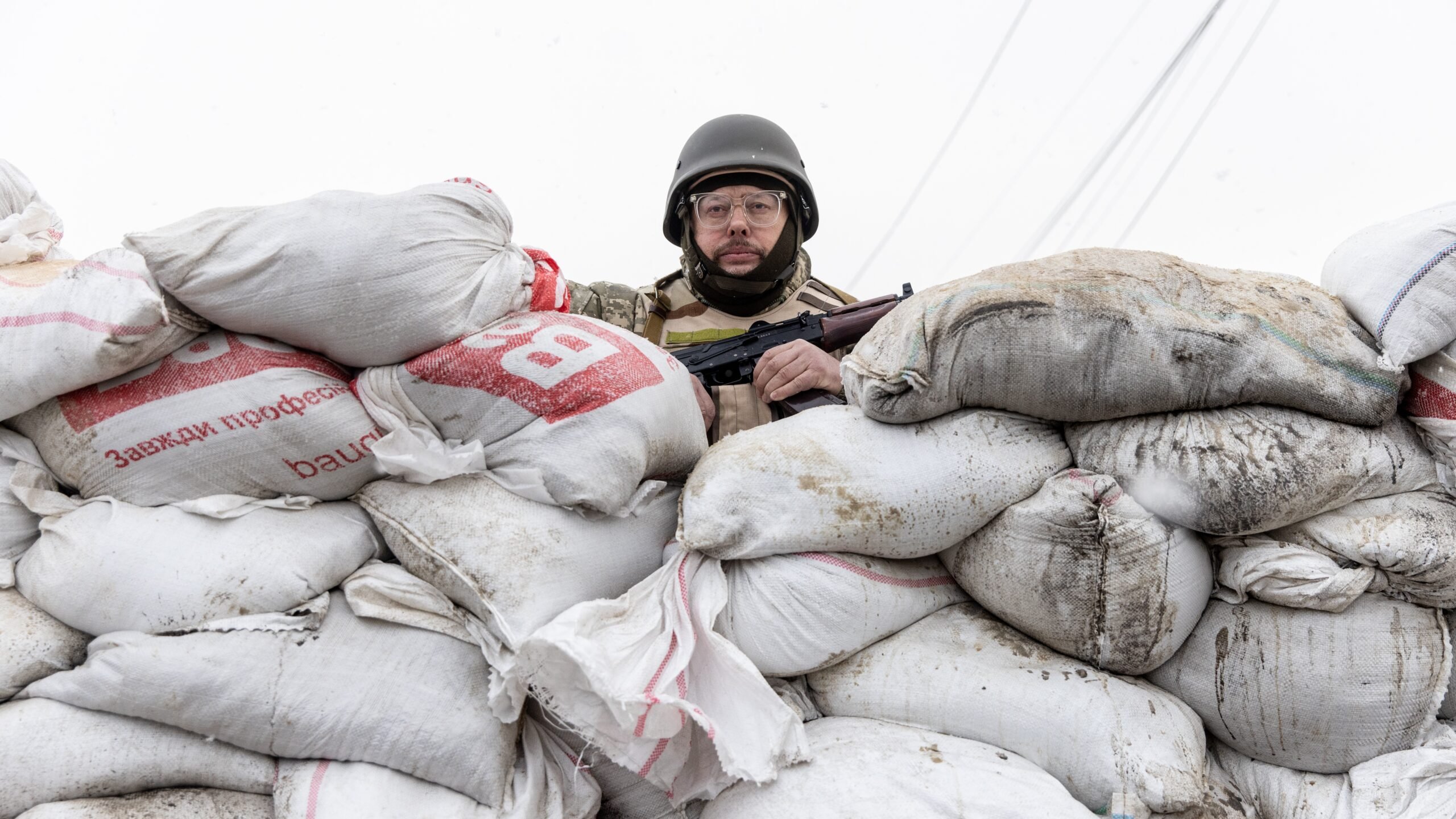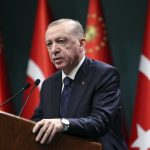Russia pounded a wide area of Ukraine on Thursday, including Kyiv, bombarding the city while the head of the United Nations was visiting, in the boldest attack on the capital since Moscow’s forces retreated weeks ago.
At least one person was killed and several were injured in the attack on Kyiv, including some who were trapped in the rubble when two buildings were hit, rescue officials said.
The bombardment came barely an hour after Ukrainian President Volodymyr Zelenskyy held a news conference with UN Secretary-General António Guterres, who said Ukraine has become “an epicentre of unbearable heartache and pain”.
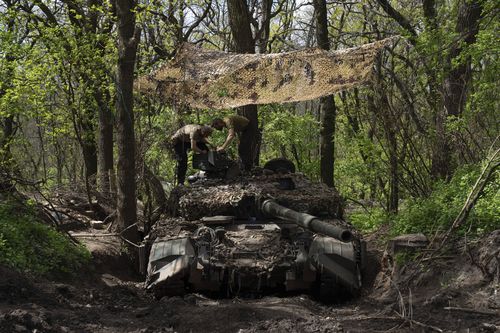
A spokesperson said Mr Guterres and his team were safe.
UN Secretary-General António Guterres condemned the atrocities visited on towns like Bucha where evidence of mass killings of civilians was found after Russia’s retreated from the area in the face of stiffer than expected Ukrainian resistance.
Forced to regroup after failing to take the capital, Russia switched its focus to the vital eastern industrial heartland, where fighting is now picking up pace. Ukraine’s military said several areas in the Donbas have come under intense fire in the past day, and satellite images showed new damage from bombardments on the last known pocket of Ukrainian resistance in Mariupol.
Ukrainian authorities warned that civilians who are still in the southeastern port city face dangerously unsanitary conditions, while many of the dead from a two-month siege remain unburied.
“Wherever there is a war, the highest price is paid by civilians,” said Guterres as he visited the bombed out Kyiv suburb of Irpin.
He sought to drive home the devastation, saying he imagined his own family having to flee from bombs falling on their home, and he reiterated how important it was that the war crimes alleged be investigated.
“But when we talk about war crimes, we cannot forget that the worst of crimes is war itself,” he added, in his stop in Bucha.
The revelation of mass killings around Kyiv helped to galvanise support for Ukraine in the West, which has slapped sanctions on Russia and sent arms to Ukraine. Bulgarian Prime Minister Kiril Petkov vowed his country would join others in providing military assistance as he toured another scene of atrocities outside Kyiv, Borodyanka.
“We cannot be indifferent. We cannot say that this is a Ukrainian problem, we cannot say some people are dying but we are not interested in that,” he said. “This is not just the battle for Ukraine, but it is a matter for civilisation to choose which side to take.”

Bulgaria, under a new liberal government that took office last fall, has cut many of its old ties to Moscow and supported punitive measures against the Kremlin.
The visit by the Bulgarian leader comes a day after Russia suddenly cut off natural gas to his country and fellow NATO member Poland, in what was seen as a bid to punish and divide the West over its support for Ukraine ahead of the potentially pivotal battle in the eastern industrial region of the Donbas.
Residents face ‘scary’ new Russian offensive
As Russia presses that offensive, civilians again bear the brunt.
“It’s not just scary. It’s when your stomach contracts from pain,” Tatiana Pirogova, a resident of the northeastern city of Kharkiv, said. “When they shoot during the day, it’s still OK, but when the evening comes, I can’t describe how scary it is.”
The General Staff of Ukraine’s military said Russian forces were “exerting intense fire” in several places in the Donbas. It said that over the past 24 hours, the Ukrainian forces have repelled six attacks in the region.
The most intensive action was around Donetsk and close to Kharkiv, which lies outside the Donbas but is seen as key to Russia’s apparent bid to encircle Ukrainian troops there.
Luhansk governor Serhiy Haidai said the Russian army also heavily shelled residential areas in his region, also in the Donbas, saying that four civilians died in the past day and four more were wounded.
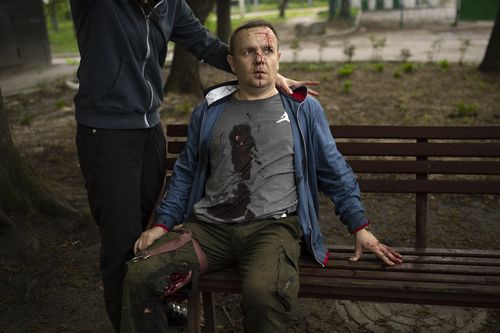
Satellite photos analysed by The Associated Press also showed evidence of intense Russian fire on Mariupol in recent days. The images show how concentrated attacks have greatly damaged a central facility at the Azovstal steelworks, the last redoubt of Ukrainian fighters in the key battleground city.
An estimated 1000 civilians are sheltering along with about 2,000 Ukrainian fighters in the steelworks, a massive Soviet-era complex with a warren of underground facilities built to withstand airstrikes.
Hundreds of thousands of Mariupol’s residents have fled, but the city council said Thursday that the 100,000 who remain behind face a “deadly danger,” at risk of catching diseases like cholera and dysentery because of deeply unsanitary conditions in the city that has largely been reduced to rubble by Russia’s siege.
“Deadly epidemics may break out in the city due to the lack of centralised water supply and sewers,” the council said on the messaging app Telegram. It added that bodies were decomposing under rubble and there was a “catastrophic” shortage of drinking water and food.
Russia, meanwhile, said a city under its control in the south came under fire. In what could be a Ukrainian counterattack, a series of explosions boomed near the television tower late Wednesday in Kherson, which has been occupied by Russian forces since early in the war. The blasts at least temporarily knocked Russian channels off the air, Ukrainian and Russian news organisations reported.
Ukraine has urged its allies to send even more military equipment so it can continue its fight.

NATO chief Jens Stoltenberg said Thursday that “up to date, NATO allies have pledged and provided at least 8 billion US dollars in military support to Ukraine. And we see the importance of further stepping up our support to Ukraine.”
While Russia’s initial blitz was stunted — and it suffered the humiliating loss of a massive warship — Britain’s Defence Ministry said the Russian navy still has the ability to strike coastal targets in Ukraine.
In an intelligence briefing posted Thursday morning, the ministry says that about 20 Russia naval vessels, including submarines, are currently operating the Black Sea zone.
But the ministry says Russia isn’t able to replace the guided-missile cruiser Moskva, which sank earlier this month in the Black Sea, because the Bosporus Strait remains closed to all non-Turkish warships. Russia also lost the landing ship Saratov, which was destroyed by explosions and fire on March 24.
In addition to its manoeuvres on the battlefield, Moscow has also piled on the pressure by leveraging its crucial energy exports.
European leaders blasted the decision to cut off Poland and Bulgaria as “blackmail,” saying the move and the Kremlin’s warning that it might cease shipments to other countries is a failed attempt to divide the West over its support for Ukraine.
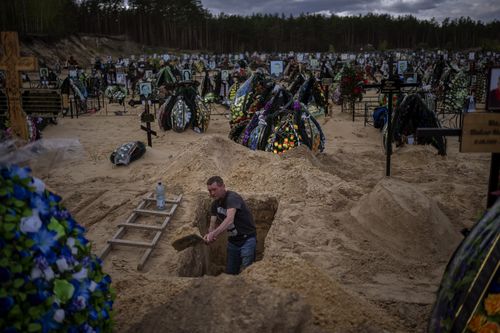
The tactic against the two EU countries could eventually force targeted nations to ration gas and deal another blow to economies suffering from rising prices. At the same time, it could deprive Russia of badly needed income to fund its war effort.
The gas cuts do not immediately put the two countries in any dire trouble. Poland, especially, has been working for many years to line up other suppliers, and the continent is heading into summer, making gas less essential for households.
Gazprom said it shut off the two countries because they refused to pay in rubles, as President Vladimir Putin has demanded of “unfriendly” nations.
European countries have balked at Russia’s demand for rubles. Moscow has since proposed a system that it says satisfies its demand — but that the Europeans say means they are still paying in either euros or dollars.

Cluster bombs in civilian areas evidence of war crimes, Ukrainians say
“Europe (and) Germany will make payments in euros and others may pay in dollars, and not in rubles,” Germany’s Economy Minister Robert Habeck said Wednesday. “The conversion, once the payments have been made, is a matter for Gazprom. We have discussed this with the European Union. We will continue down this path.”
Source: AP
